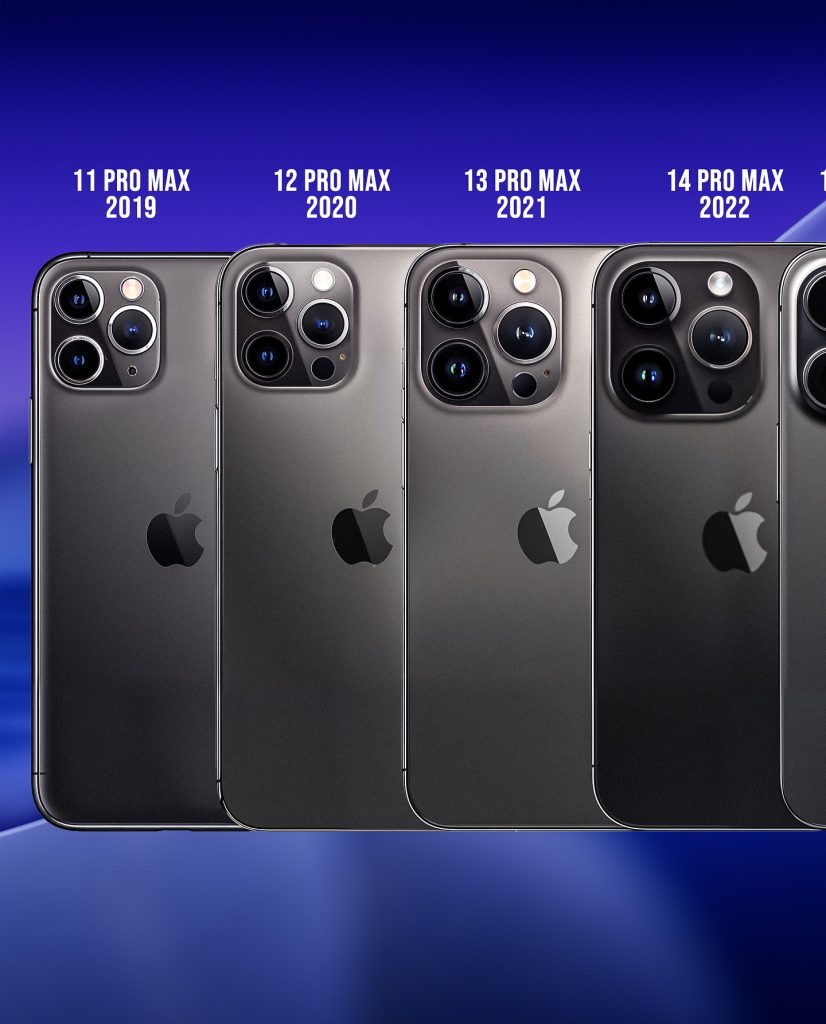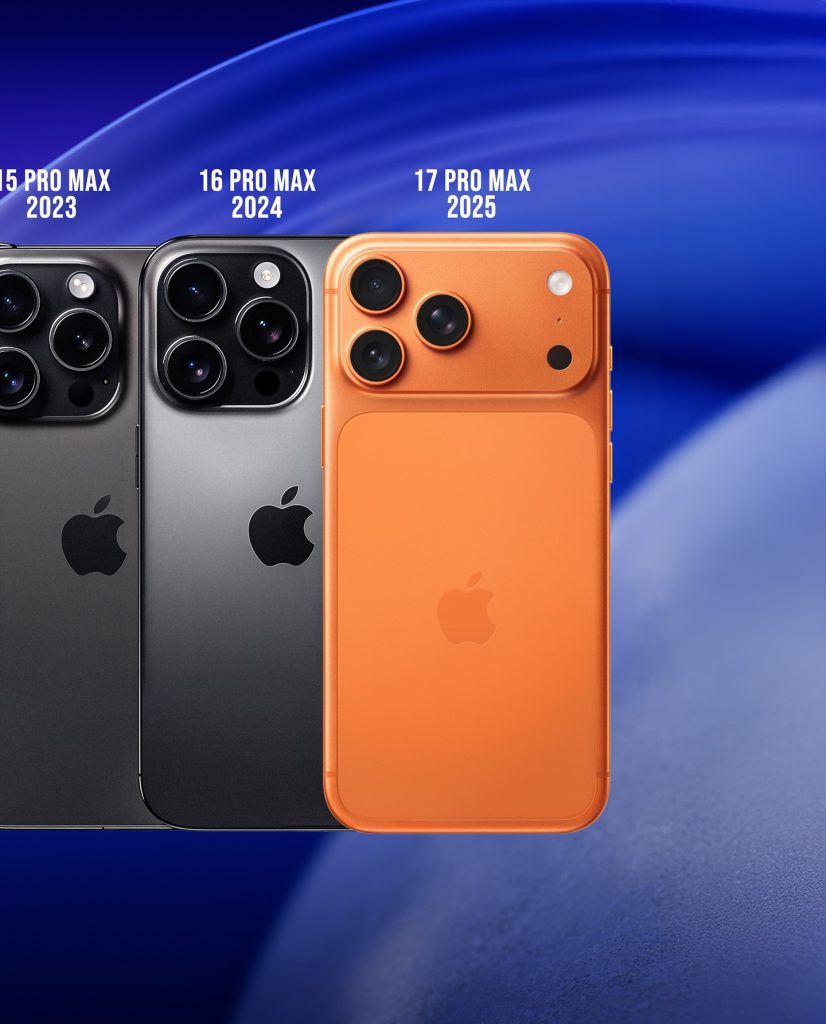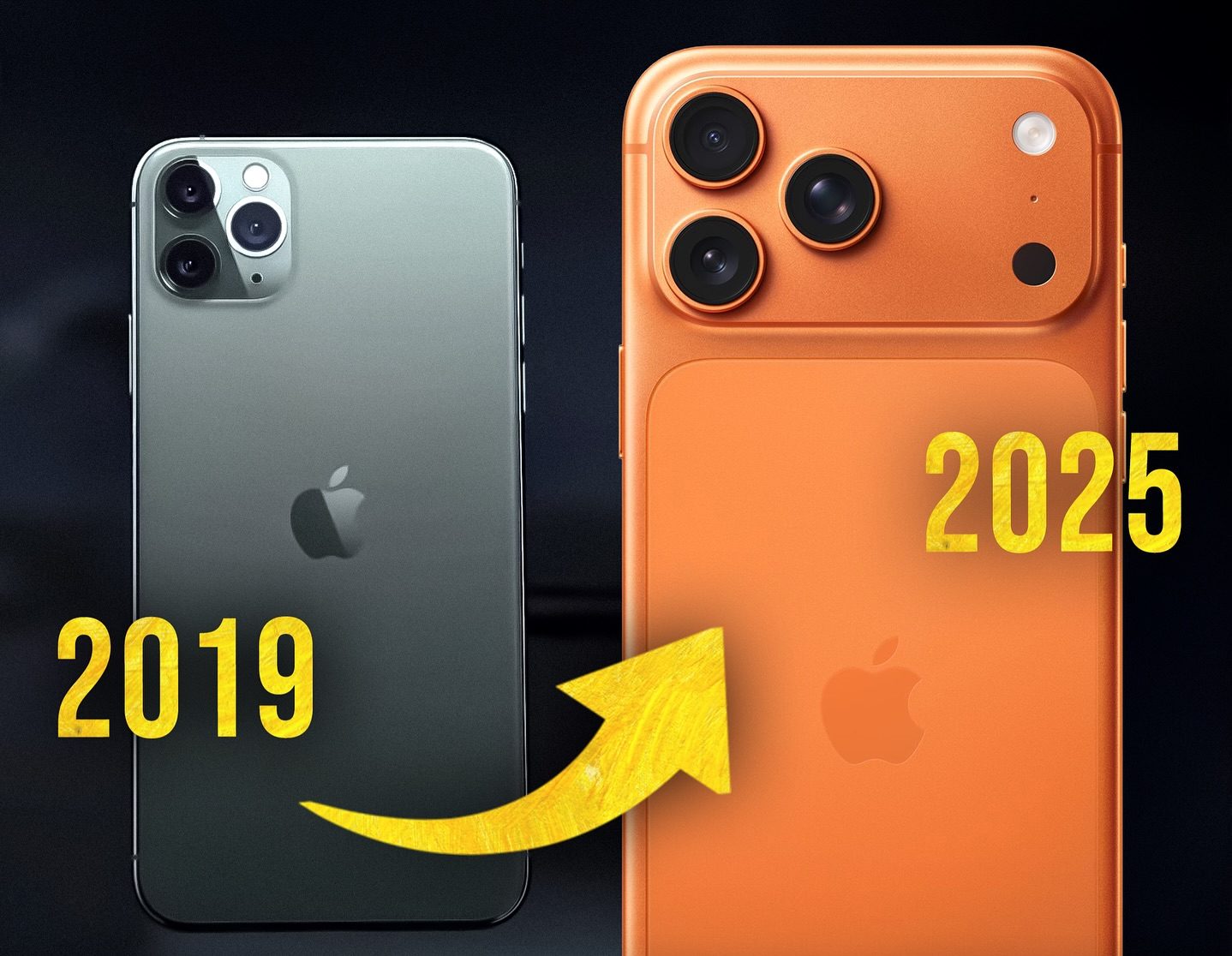Here’s What 6 Years of iPhone Evolution Looks Like
Six years of iPhone evolution 📱
In 2019, the 11 Pro set the template with a square triple-camera and a true “Pro” focus. Now the just-announced iPhone 17 Pro brings three 48 MP rear cameras and a new aluminum unibody built for sustained performance.
From 11 Pro to 17 Pro, do you notice a real big jump?
When you look back at the iPhone 11 Pro Max, it feels like the start of a new chapter in Apple’s history. Before it, the iPhone XS and X series were powerful but not revolutionary. Then came the 11 Pro with its triple-camera system, and suddenly Apple was telling people that this wasn’t just a smartphone anymore—it was a tool for professionals, for creators, for anyone who wanted to push the limits of what a phone could do. The square camera module was mocked online at first, but soon enough, it became iconic. Night Mode stunned people. Low-light photos finally looked natural, and the A13 Bionic chip made sure everything ran as smoothly as silk. For many, this was the first time an iPhone truly earned its “Pro” badge.
A year later, in 2020, the iPhone 12 Pro Max took the world into the 5G era. It wasn’t just about speed, though that was impressive enough. Downloads, streaming, and gaming all felt like the future had arrived early. But what really captured hearts was the return of flat edges. Apple brought back that squared-off design that reminded people of the iPhone 4 and 5, and it instantly felt premium again. Stainless steel, Ceramic Shield, and those sharp lines—it was like holding a piece of jewelry that also happened to be one of the most powerful devices on Earth. In a year defined by the pandemic, this phone connected people more than ever. It wasn’t just a product launch; it was a lifeline.
By 2021, with the iPhone 13 Pro Max, Apple leaned into smoothness and sophistication. This was the year of ProMotion, the long-awaited 120Hz display that finally gave iPhone users the kind of silky scrolling and responsive touch that Android fans had been boasting about. Everything felt more alive, more fluid. The notch shrank a little, giving users more screen to enjoy, and the cameras took another leap forward with Cinematic Mode, which blurred backgrounds like a Hollywood production. Suddenly, everyday people were shooting videos with depth and drama. The iPhone 13 Pro Max may not have looked dramatically different from its predecessor, but living with it made the difference impossible to ignore.

The iPhone 14 Pro Max in 2022 was a turning point. It gave the world the Dynamic Island, something nobody really asked for, yet suddenly everyone wanted. Apple transformed a design compromise—the notch—into a playful, useful feature. Notifications, music, timers, and calls all lived in this little shape at the top of the screen, and it felt like magic. Add to that the always-on display and emergency satellite connectivity, and the iPhone 14 Pro Max felt like a survival tool as much as a luxury gadget. For the first time, your phone could save your life when you were stranded with no signal. Apple wasn’t just selling convenience anymore; it was selling peace of mind.
Then came the iPhone 15 Pro Max in 2023, lighter and stronger than ever thanks to titanium. For years, people complained that the Pro Max phones felt heavy in the hand, and Apple finally solved it. Titanium gave it a rugged elegance and cut the weight in a way you could feel immediately. But what really made headlines was the exclusive 5x telephoto zoom, a feature only on the Pro Max. Suddenly, you could capture far-off subjects with incredible clarity. For photographers, travelers, and everyday users, this was a game-changer. Holding that phone felt like carrying a professional camera that also happened to make calls.
The iPhone 16 Pro Max in 2024 was about refinement. It didn’t introduce a flashy new feature like Dynamic Island or titanium, but it focused on what mattered in the long run: performance and intelligence. The new cooling system allowed the phone to sustain its peak power without overheating, perfect for gamers and creators who pushed their devices to the limit. AI integration became more deeply woven into the system, making Siri smarter, photos more adaptive, and daily tasks more intuitive. It was the kind of update that didn’t wow you on stage but quietly changed the way you lived with your phone every day.

Now, here we are in 2025, staring at the iPhone 17 Pro Max. It looks bold in its aluminum unibody design, something that feels at once futuristic and minimal. Apple has given it three 48MP cameras, each pushing mobile photography to heights that rival dedicated gear. More than just numbers, the images it produces are sharper, brighter, and more realistic than ever. But beyond the specs, this phone embodies Apple’s philosophy of sustained performance. It isn’t just built for quick bursts of power—it’s built to last through long sessions, whether you’re editing videos, gaming, or pushing the phone to its limits.
So has the jump from 11 Pro to 17 Pro been massive? In some ways, yes. The cameras are leaps ahead, the designs more refined, the materials lighter yet stronger, and the intelligence of the phone smarter than ever. But in other ways, the iPhone remains familiar. The silhouette hasn’t changed much. The core experience of an iPhone—simple, reliable, premium—has stayed consistent. Apple hasn’t tried to reinvent the wheel every year. Instead, it has perfected it, step by step, in ways that may feel subtle in the moment but profound when you look back over six years.
That’s what makes this journey special. The iPhone 17 Pro Max isn’t just the latest device—it’s the sum of all the progress made since 2019. Each model layered improvements, innovations, and refinements that built upon the last. And maybe that’s the real magic of Apple’s evolution. It’s not about shocking people with one massive leap, but about quietly reshaping how millions of us live, work, and connect—until we look back and realize how far we’ve truly come.

